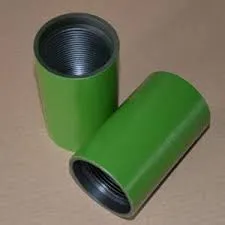- Afrikaans
- Albanian
- Amharic
- Arabic
- Armenian
- Azerbaijani
- Basque
- Belarusian
- Bengali
- Bosnian
- Bulgarian
- Catalan
- Cebuano
- Corsican
- Croatian
- Czech
- Danish
- Dutch
- English
- Esperanto
- Estonian
- Finnish
- French
- Frisian
- Galician
- Georgian
- German
- Greek
- Gujarati
- Haitian Creole
- hausa
- hawaiian
- Hebrew
- Hindi
- Miao
- Hungarian
- Icelandic
- igbo
- Indonesian
- irish
- Italian
- Japanese
- Javanese
- Kannada
- kazakh
- Khmer
- Rwandese
- Korean
- Kurdish
- Kyrgyz
- Lao
- Latin
- Latvian
- Lithuanian
- Luxembourgish
- Macedonian
- Malgashi
- Malay
- Malayalam
- Maltese
- Maori
- Marathi
- Mongolian
- Myanmar
- Nepali
- Norwegian
- Norwegian
- Occitan
- Pashto
- Persian
- Polish
- Portuguese
- Punjabi
- Romanian
- Russian
- Samoan
- Scottish Gaelic
- Serbian
- Sesotho
- Shona
- Sindhi
- Sinhala
- Slovak
- Slovenian
- Somali
- Spanish
- Sundanese
- Swahili
- Swedish
- Tagalog
- Tajik
- Tamil
- Tatar
- Telugu
- Thai
- Turkish
- Turkmen
- Ukrainian
- Urdu
- Uighur
- Uzbek
- Vietnamese
- Welsh
- Bantu
- Yiddish
- Yoruba
- Zulu
well tubing and casing
Well Tubing and Casing Essential Components in Drilling Operations
In the realm of oil and gas extraction, well tubing and casing are critical components that significantly influence the success and safety of drilling operations. Understanding their functions, materials, and installation processes is essential for professionals in the industry.
What is Well Casing?
Well casing refers to the large-diameter pipes that are installed in the wellbore during the drilling process. The primary purpose of casing is to provide structural integrity to the well, preventing collapses and protecting both the well and groundwater from contamination. After drilling, the hole is filled with cement, which adheres to the casing and the rock layers around it. This cementing process is vital as it provides a barrier against fluid migration and ensures the long-term stability of the well.
There are different types of casing used in drilling operations, including surface casing, intermediate casing, and production casing, each serving a specific purpose. Surface casing is typically installed first to protect groundwater resources, while intermediate casing helps to manage pressure differences and stabilize the wellbore. Finally, production casing is placed to facilitate the extraction of oil or gas and is designed to withstand high pressures and corrosive conditions.
What is Well Tubing?
Well tubing, on the other hand, is a smaller diameter pipe that runs inside the production casing. It is specifically designed to transport hydrocarbons from the reservoir to the surface, enabling efficient production. Tubing is essential for maintaining the flow of oil or gas, and it can be easily removed and replaced when necessary, which is a significant advantage during maintenance operations.
well tubing and casing

Well tubing is typically made from carbon steel or stainless steel, both of which are engineered to withstand various pressures and temperatures encountered in the production phase. The external surface of tubing is often coated with protective materials to resist corrosion, especially in environments with high salinity or other aggressive fluids.
Installation and Maintenance
The installation of casing and tubing is a meticulous process that involves multiple phases. After drilling, casing strings are lowered into the wellbore and secured in place with cement. Well operators ensure the correct placement and sealing to prevent any environmental hazards. Once the casing is in place, the tubing is installed within the production casing to facilitate hydrocarbon extraction.
Regular maintenance of both casing and tubing is crucial for ensuring the longevity and safety of the well. Operators conduct inspections and use advanced technologies such as acoustic or electromagnetic methods to detect any potential issues, including corrosion or mechanical failures. Addressing these problems promptly can prevent costly downtime and enhance safety.
Innovations and Future Trends
The oil and gas industry is witnessing advancements in materials and technologies related to well casing and tubing. Composite materials, for example, are being explored for their lightweight and corrosion-resistant properties, which can enhance operational efficiency. Additionally, smart technologies integrated into casing and tubing systems can provide real-time data on downhole conditions, allowing for proactive management of the well.
In conclusion, well tubing and casing are fundamental elements of the drilling process, serving both structural and operational roles. Their proper installation and maintenance are vital for the safety and efficiency of oil and gas production. As technology continues to evolve, the industry may see improved materials and techniques that further enhance the performance and reliability of these essential components. Understanding their critical functions helps engineers and operators optimize their drilling strategies and contribute to a more sustainable and effective extraction process.
-
Tubing Pup Joints: Essential Components for Oil and Gas OperationsNewsJul.10,2025
-
Pup Joints: Essential Components for Reliable Drilling OperationsNewsJul.10,2025
-
Pipe Couplings: Connecting Your World EfficientlyNewsJul.10,2025
-
Mastering Oilfield Operations with Quality Tubing and CasingNewsJul.10,2025
-
High-Quality Casing Couplings for Every NeedNewsJul.10,2025
-
Boost Your Drilling Efficiency with Premium Crossover Tools & Seating NipplesNewsJul.10,2025







